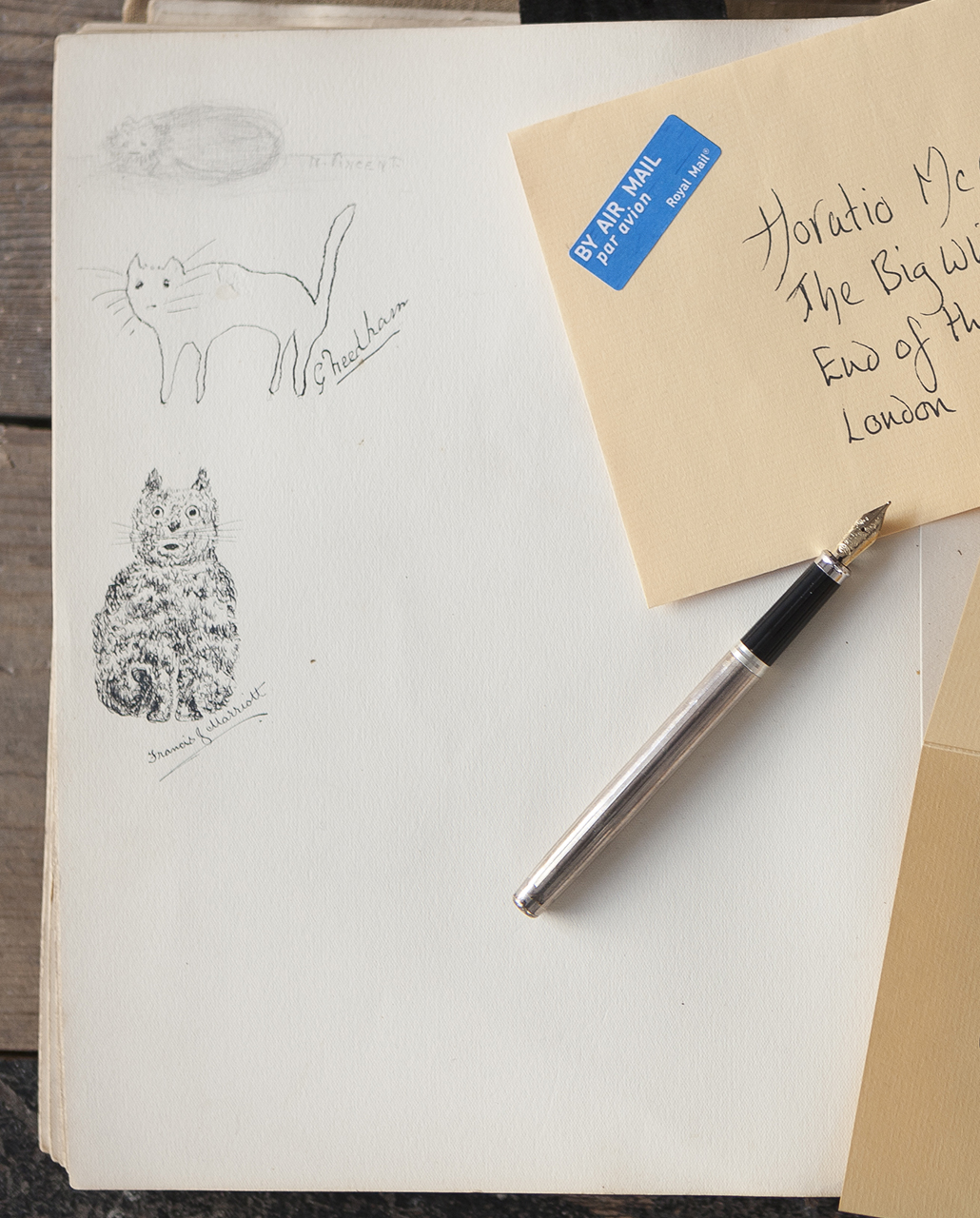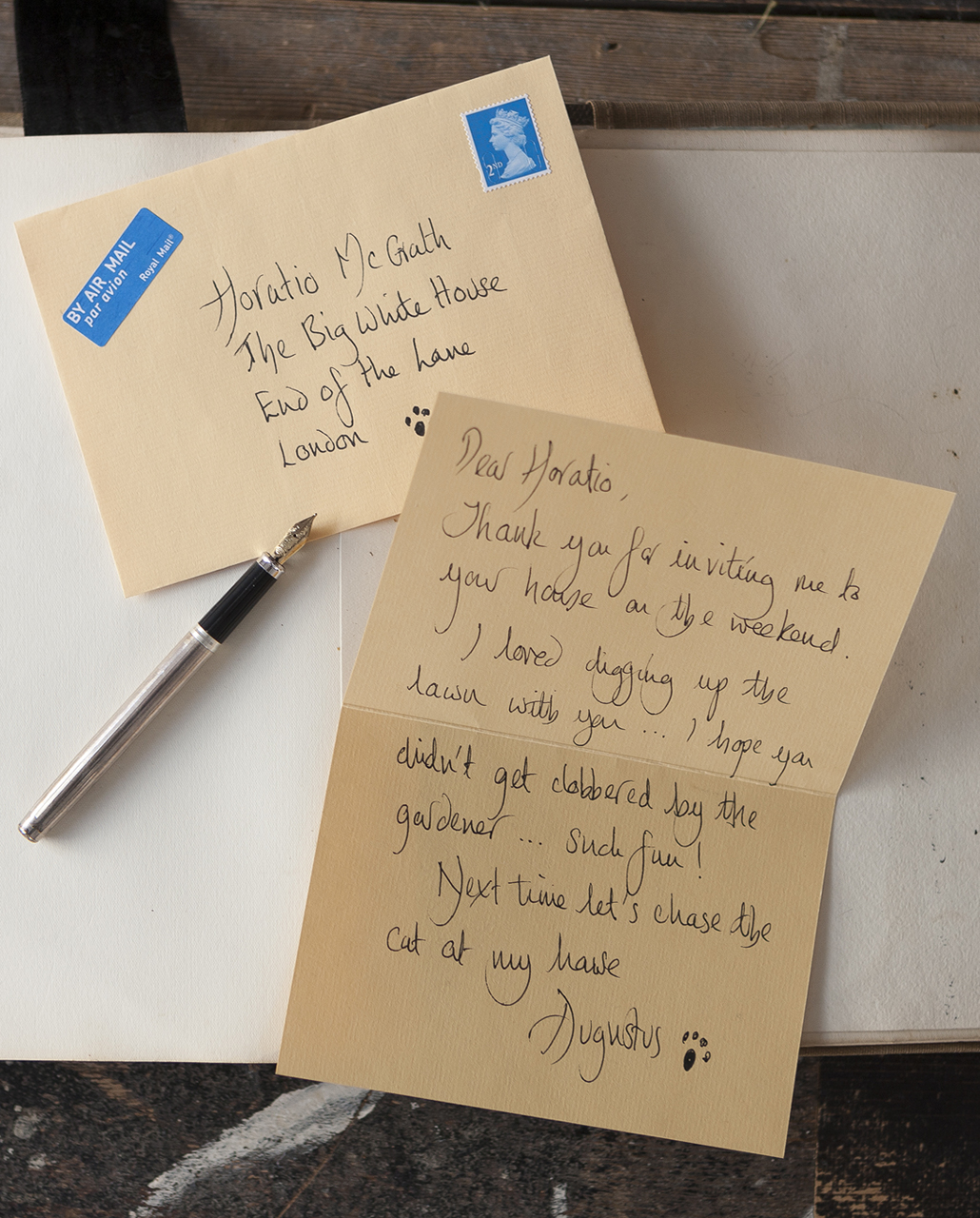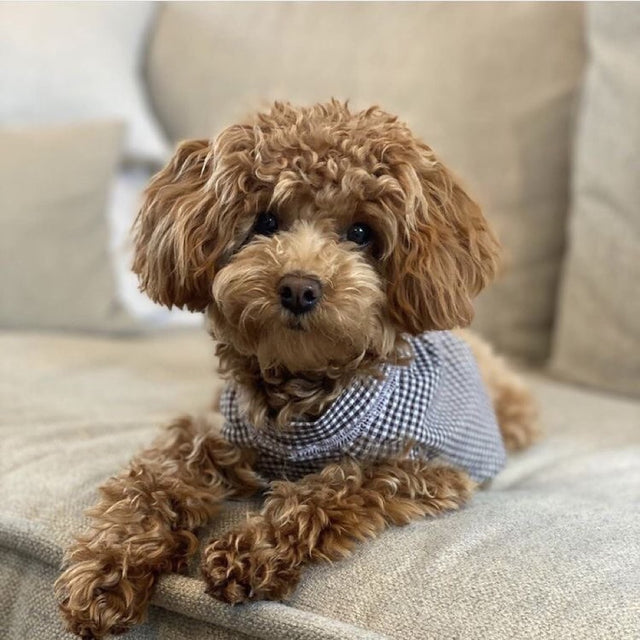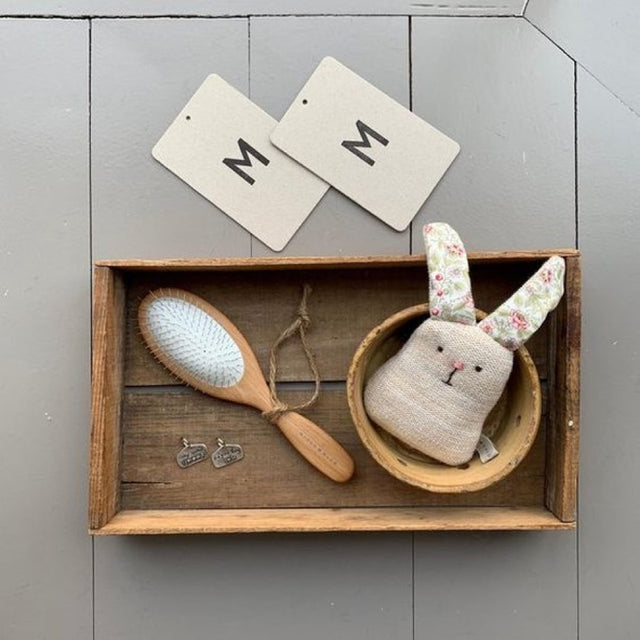Authors & Dogs
The Librarian Collection

Authors & Dogs
The Librarian Collection
Great literature is a great source of inspiration for us at Mungo & Maud, particularly when it came to creating the smart and neat Librarian Collection.
So what is it that inspires great writers? Well, often it's their dogs or cats. Faithful companions and muses, these creatures all had a noteworthy impact on their literary master’s work...
Lord Byron
In 1803, when the poet was around 15 years old, Lord Byron was given a Newfoundland he called Boatswain. Byron had many dogs in his lifetime but described Botswain as his “firmest friend”. Tragically the dog contracted rabies and died 5 years later. It is said that during the dog’s sickness, Byron wiped away the Botswain’s infected saliva with his own hands and personally nursed the dog without fear of becoming infected. Upon the dog’s death, Byron composed the poem Epitaph To A Dog, including the lines “the poor Dog, in life the firmest friend, / The first to welcome, foremost to defend, / Whose honest heart is still his Masters own”. This poem is carved on the dog’s tomb at Byron’s estate Newstead Abbey, with an introduction by Byron’s friend, John Hobhouse, “Near this spot / are deposited the Remains of one / who possessed Beauty without Vanity, / Strength without Insolence, / Courage without Ferocity, / and all the Virtues of Man without his Vices”. Byron wished to be buried alongside the dog after his own death, but this wish was never fulfilled and Botswain’s tomb is larger than Byron’s own.









